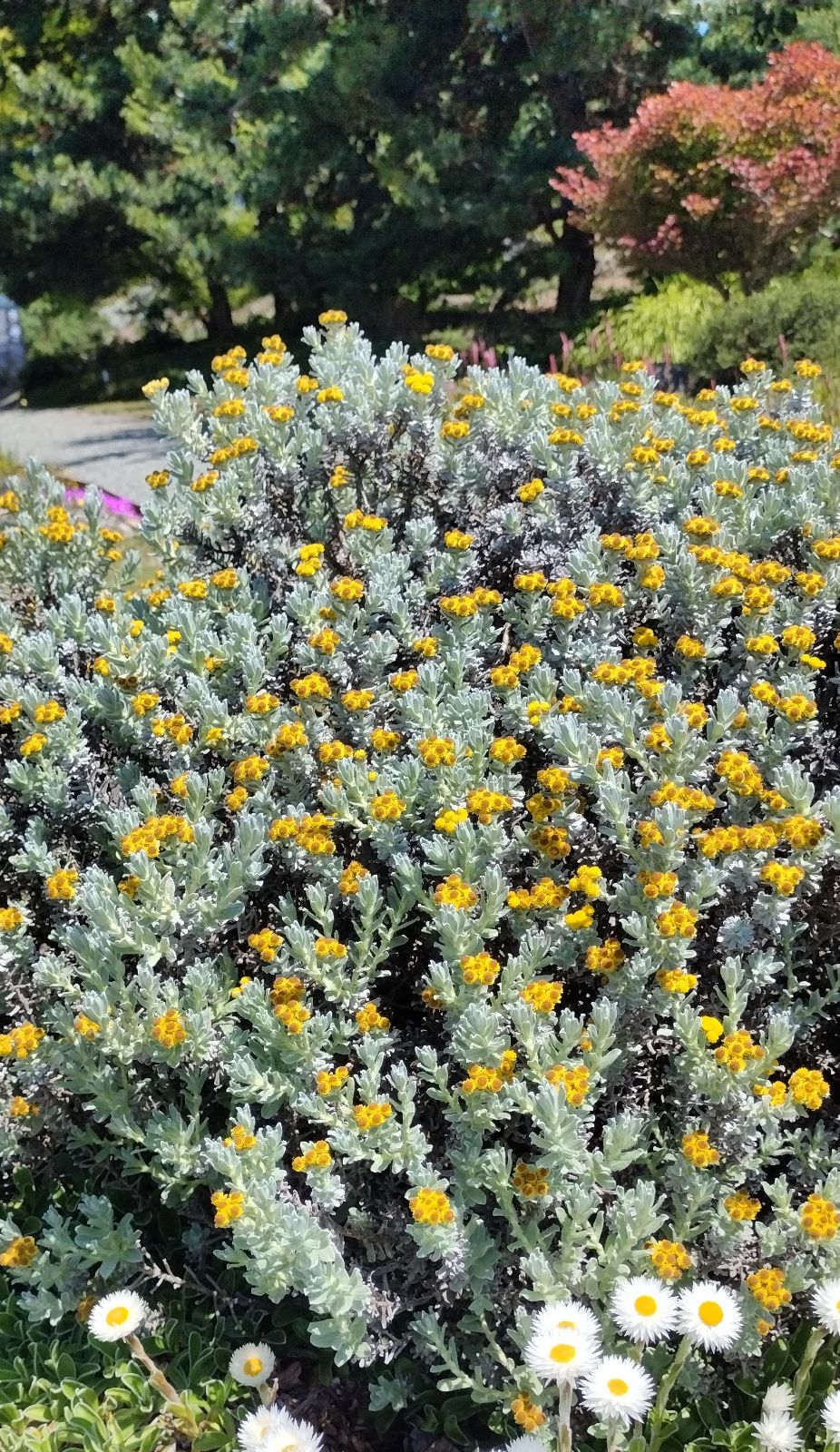Helichrysum splendidum
Credits
Article from Bean's Trees and Shrubs Hardy in the British Isles
Recommended citation
'Helichrysum splendidum' from the website Trees and Shrubs Online (treesandshrubsonline.
Genus
Synonyms
- Gnaphalium splendidum Thunb.
- Helichrysum trilineatum Hort., not DC.
- H. alveolatum Hort., not DC.
Other taxa in genus
An evergreen, white-woolly shrub up to 6 ft tall in the wild; stems ascending, rigid, not angled, rather densely leafy. Leaves sessile, linear-oblong, up to 11⁄2 in. long, 1⁄4 in. wide, white-woolly on both surfaces, often revolute at the margins, with three more or less parallel main veins springing from the base. Flower-heads bright yellow, about 1⁄4 in. wide, borne at the tips of the shoots throughout the growing season in globose or hemispherical cymose clusters.
Native of the mountains of Africa from Ethiopia to the Cape; discovered by C. P. Thunberg, a pupil of Linnaeus, during his visit to the Cape 1772–5 and described by him in 1800. The date of first introduction is not known, but the present stock probably derives from seeds collected by Mrs Milford in the Drakensburg Mountains between the wars. In recent years H. splendidum has become common in gardens, grown for its silvery foliage rather than for its flowers, which have no ornamental value. It is remarkably hardy, and will in time grow to 3 ft in height and twice that in width, though it is more decorative if kept compact and well furnished with foliage by regular pruning. Mrs Underwood recommends that the plants should be pruned hard in April and trimmed in early July (Grey and Silver Plants (1971), p. 116). Propagation is by cuttings.


